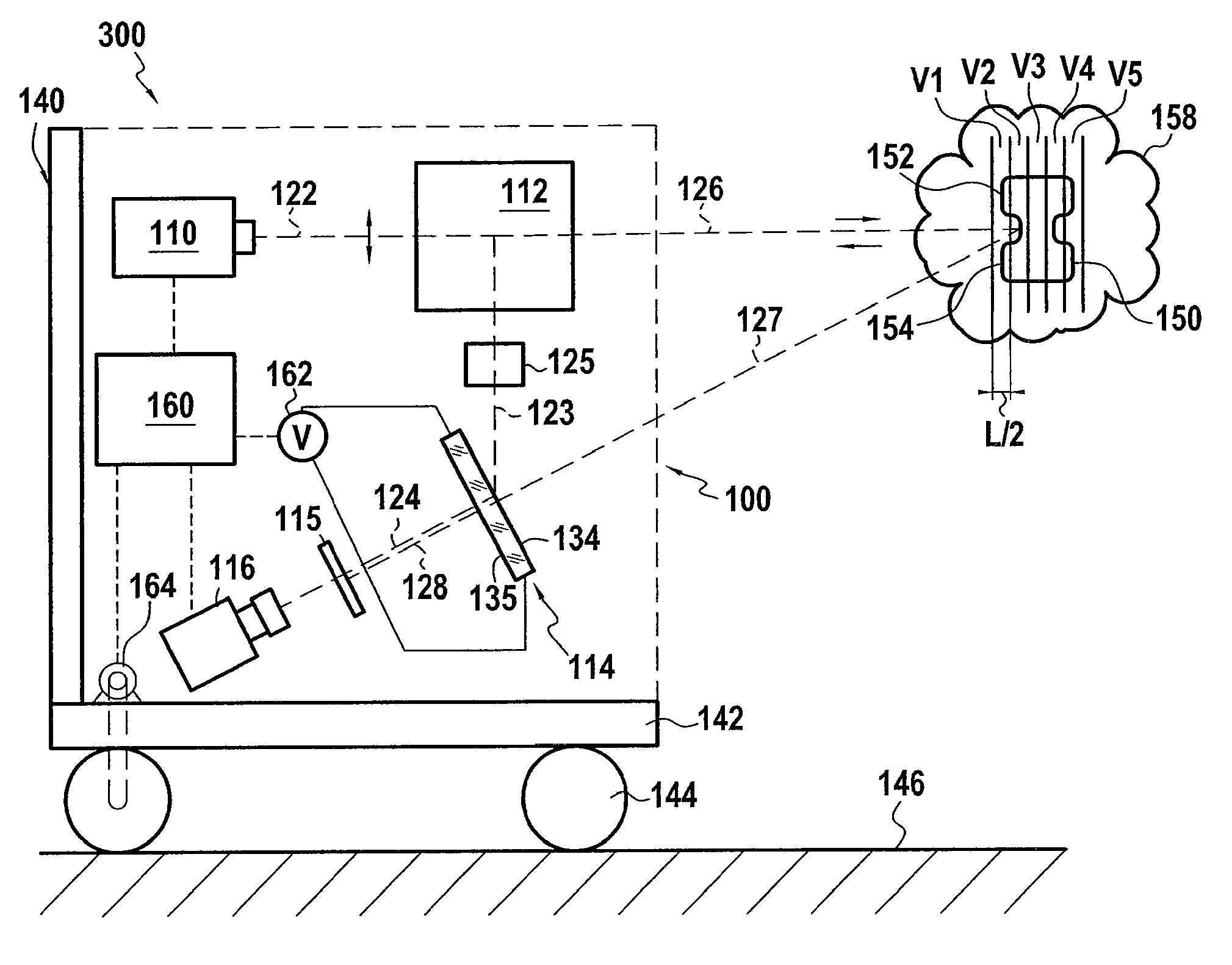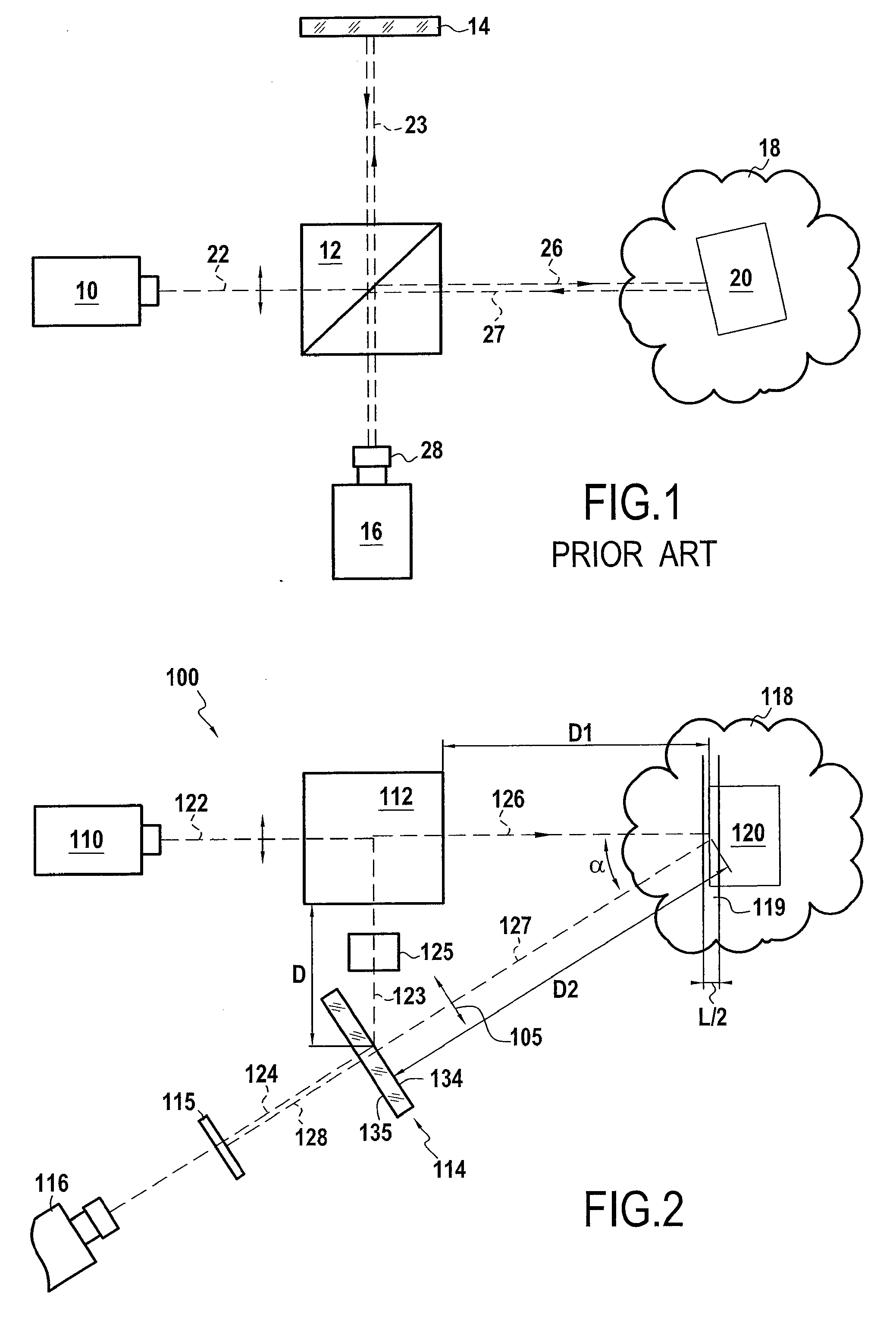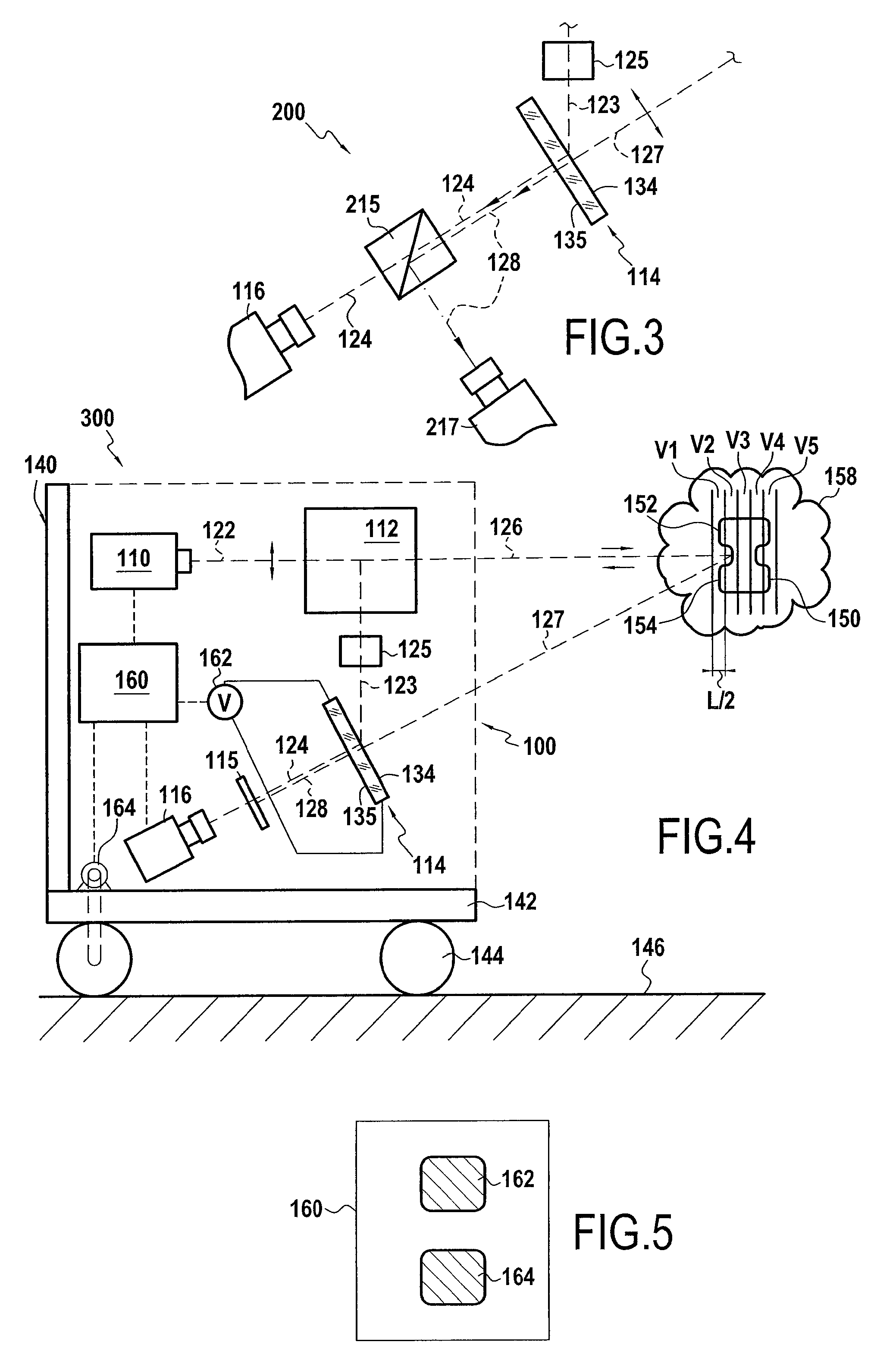Sensor and an imaging system for remotely detecting an object
a technology of an imaging system and an object, applied in the field of sensors and imaging systems for remotely detecting objects, can solve the problems of poor lateral resolution of radars, poor accuracy of both types of sensors, and high cos
- Summary
- Abstract
- Description
- Claims
- Application Information
AI Technical Summary
Benefits of technology
Problems solved by technology
Method used
Image
Examples
Embodiment Construction
[0067]A sensor 100 of the invention is shown in FIG. 2.
[0068]The sensor 100 comprises a light source 110, a beam-splitter cube 112, a photorefractive crystal 114, a polarizer 115, and a detector 116.
[0069]The light source 110 is a laser source that emits a source beam 122 towards an object 120 for measurement. In the context of the invention, the light source could equally well be a laser, a laser diode, LED, etc.
[0070]The object 120 is situated in a diffusing medium 118, which may be an atmosphere charged with particles such as a fog or the atmosphere on a rainy day, or it could be a living tissue or other tissue (where measurement is also possible, a fortiori, when the medium 118 is not a diffusing medium). The splitter cube 112 lies on the path of the source beam 122 and it splits it into two beams:
[0071]a reference beam 123 that is deflected through 90° relative to the direction of the source beam 122; and
[0072]an incident beam 126 that is not deflected and that continues its jo...
PUM
 Login to View More
Login to View More Abstract
Description
Claims
Application Information
 Login to View More
Login to View More - R&D
- Intellectual Property
- Life Sciences
- Materials
- Tech Scout
- Unparalleled Data Quality
- Higher Quality Content
- 60% Fewer Hallucinations
Browse by: Latest US Patents, China's latest patents, Technical Efficacy Thesaurus, Application Domain, Technology Topic, Popular Technical Reports.
© 2025 PatSnap. All rights reserved.Legal|Privacy policy|Modern Slavery Act Transparency Statement|Sitemap|About US| Contact US: help@patsnap.com



